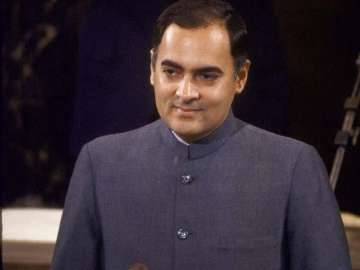Despite his initial reluctance to pursue his mother Indira Gandhi’s push for nuclear programme, Prime Minister Rajiv Gandhi in 1985 gave his nod for making preparations to test a hydrogen bomb in response to Pakistan’s nuclear programme.
According to a report in The Economic Times, about 930,000 declassified documents posted online by the Central Intelligence Agency (CIA) provide interesting insights into India’s nuclear weapons capabilities during the 1980s and Delhi's increasing concerns over Pakistan's nuclear programme at the time.
These documents reveal that the hydrogen bomb that the Rajiv Gandhi government was preparing to explode was much stronger than the one tested 11years earlier, when Indira Gandhi was the Prime Minister.
The H-bomb was created by a team of 36 scientists at the Bhabha Atomic Research Centre and the CIA’s assessment was that a rapid series of Pakistani tests would compel New Delhi to develop nuclear weapons and touch off a nuclear arms race between the two.
The CIA, however, was of the opinion that fear of international political and economic reprisals would deter India from conducting an attack on Pakistan’s nuclear facilities.
It also believed that China and not Pakistan was perceived as a long-term threat to the Indian security.
Concerned over growing tension between India and Pakistan, the Ronald Reagan administration wanted to send an emissary to mediate between the two neighbours and help ease tensions.
The declassified documents claim that while India was not warm to the idea, it nonetheless was not against giving the person an audience.
Pakistan, on the other hand, was ready to welcome a US representative.
The Rajiv Gandhi government, however, didn’t go ahead with the testing.
India’s hydrogen bomb was finally tested in 1998 under Prime Minister Atal Bihari Vajpaye.
Latest India News
